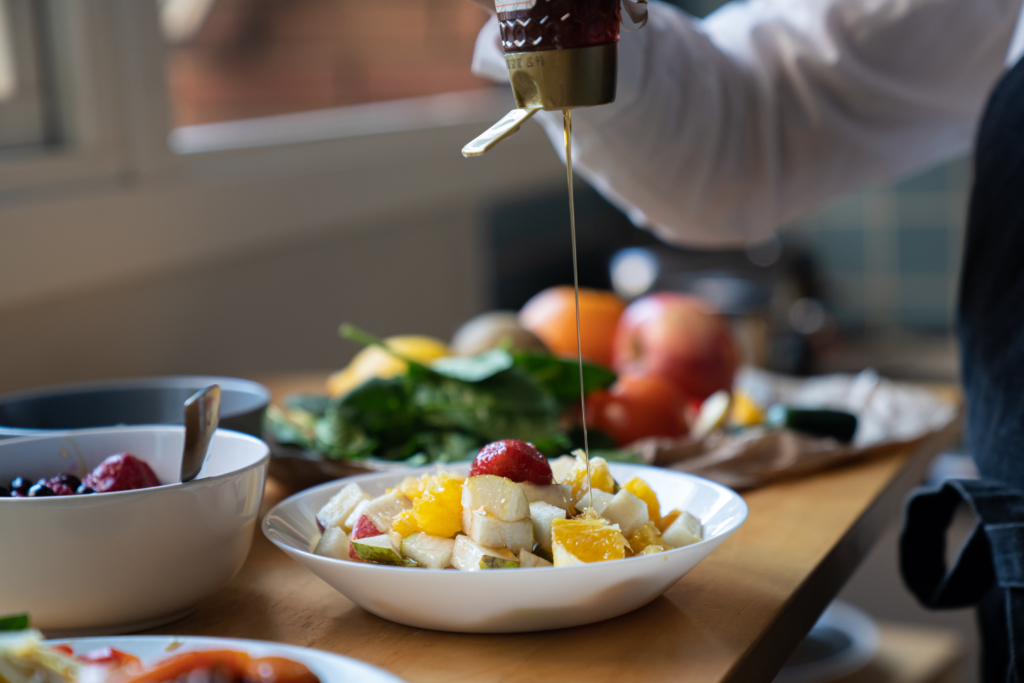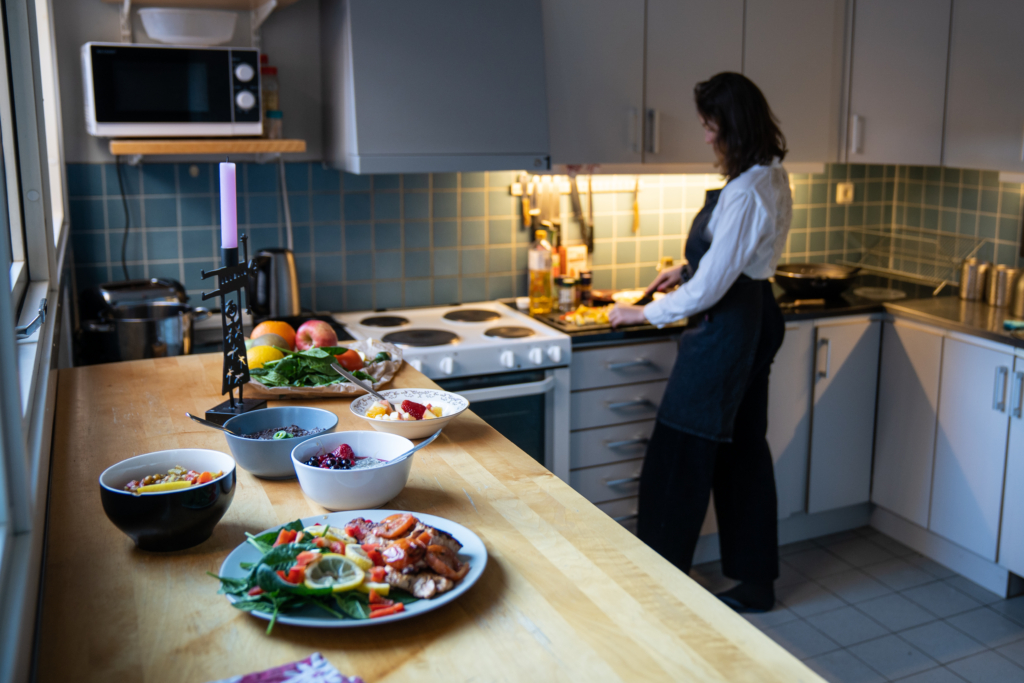With global warming’s ever-looming threat, it’s time to take an opportunity in becoming more eco-friendly with our food. Eco-friendly foods are less toxic, resource-intensive, durable, safer from pesticides and will help repair our environment and wildlife. Lundagård presents some tips for various eco-friendly meals.
What food is eco-friendly?
We want to consume foods with low carbon footprints, low water usage, and low destruction towards the air, land, soil, forests, etc. Foods that also have longevity and enhance the soil health will promote a sustainable mode of agriculture. It is best to use organic and locally produced products, and those free of pesticides. Our recommendation is to google some brands before going to the store.
Breakfast: Overnight Hemp Seed Bowl
Frozen berries, hemp seeds, oat milk
A hemp seed bowl makes for a delicious and fresh breakfast, whilst having a low impact on the environment. Using frozen berries prevents food wastage that can help save landfill space, and oat milk releases 80% lower greenhouse gas emission and 60% less energy compared to cow’s milk. Additionally, hemp seeds themselves have moderate water usage, and low destruction levels. All of this results in an easy meal that can be made in less than 10 minutes with little effort the night before, and then be topped off with organic honey in the morning.
Easy; Delicious; €€
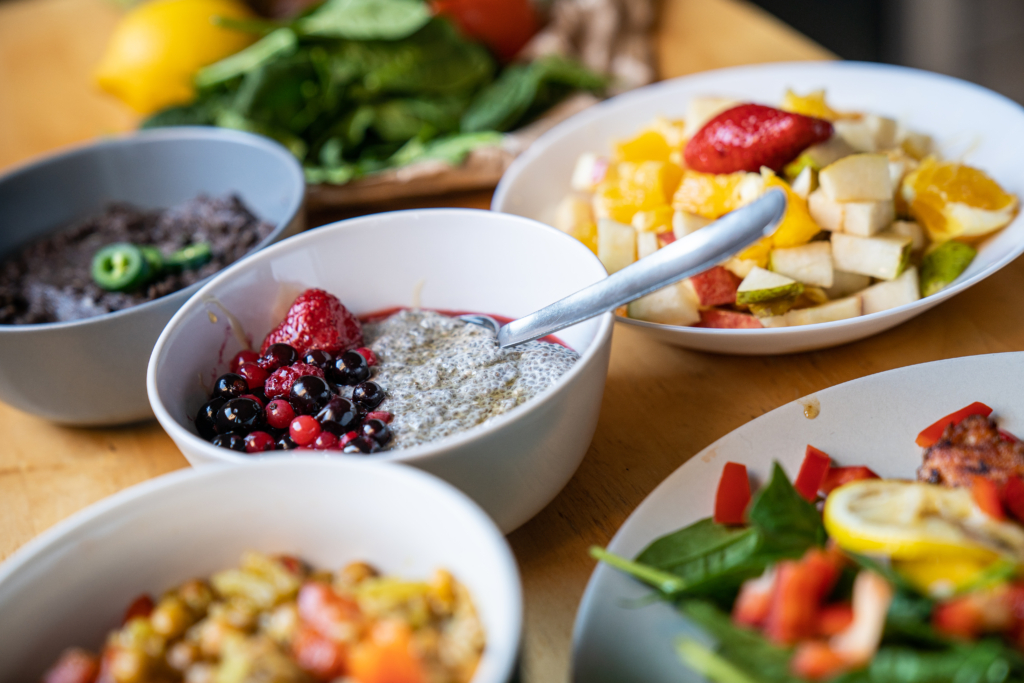
Appetizer: Black Bean Dip
Black beans, onion, lime, jalapeno, spices
When having guests over this is a quick, and simple appetizer that anyone will enjoy. Black bean production is remarkably sustainable, with no known damage to air, water, land, soil, etc., as long as you buy non-GMO/organic beans. Beans are a great way to take care of our environment, they leave a low carbon footprint, using little fertilizer and water compared to other sources of protein. The dip is very tasteful, but don’t be stingy with the spices. Although one might cry whilst making this dish (onions and jalapeños) it results in a creamy dish that can be paired with veggies or crackers.
Easy; Tasteful; €
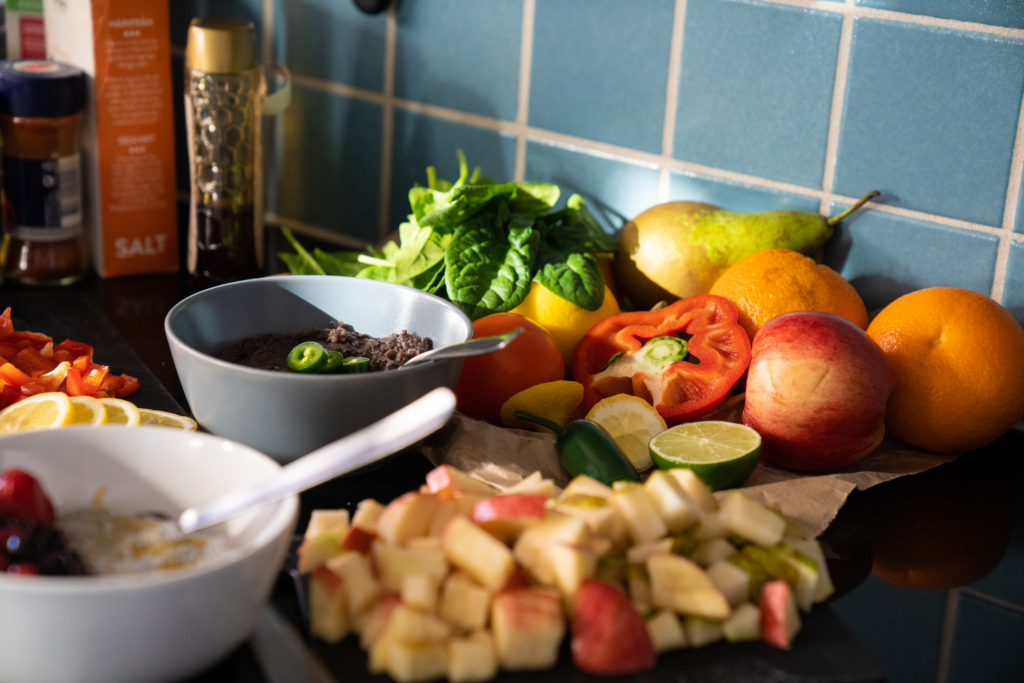
Lunch: Barely and Chickpea bowl
Barely, chickpeas, red bell pepper, spices
Chickpeas are referred to as rainfed crops, meaning they build climate resistance without the need of artificial help and enhance soil health which favors crop rotations, whereas barely is used for erosion control protecting soil from wind and rain that cause erosions. Both these ingredients are low water intensive crops, and have an extremely low destruction level. So, whilst eating this moderately toothsome meal you can be in peace that it contributes to a sustainable mode of agriculture. This is a meal that should be eaten warm and cooked in plentiful amounts of spices otherwise it’ll be a rather plain meal.
Medium; Ordinary; €
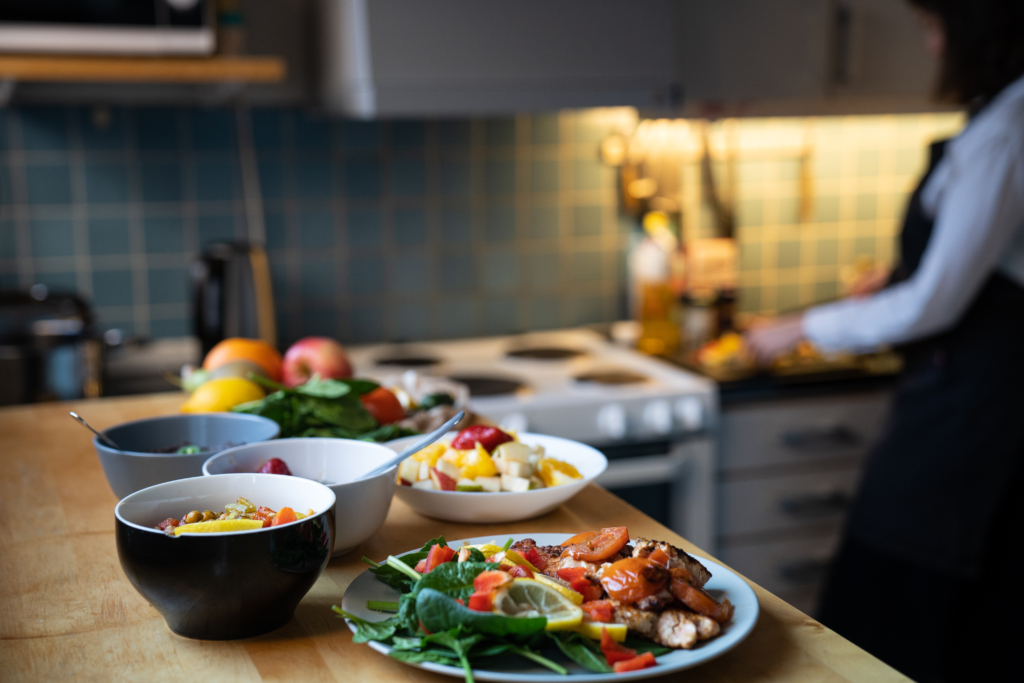
Dinner: Lemon Pepper Salmon
Wild/local salmon, lemon, spices, red bell pepper, spinach
Although some may think fish would be an unsustainable choice, catching most types of fish (especially wild-caught fish) lets out much less carbon footprints per kilo of protein than other meat alternatives and seafood. However, it is important to buy wild and local salmon that can be traced back to the fisheries, and oceans. This is an intermediate-level dish that taste much richer than GMO store bought salmon and can be paired with anything. A recommendation is to turn this into a salmon barley salad. Nevertheless, a side salad with spinach is great, which also has a low carbon footprint, low water usage, and low destruction. This tops all the meals; the salmon was splendid.
Medium; Mouth-watering; €€€
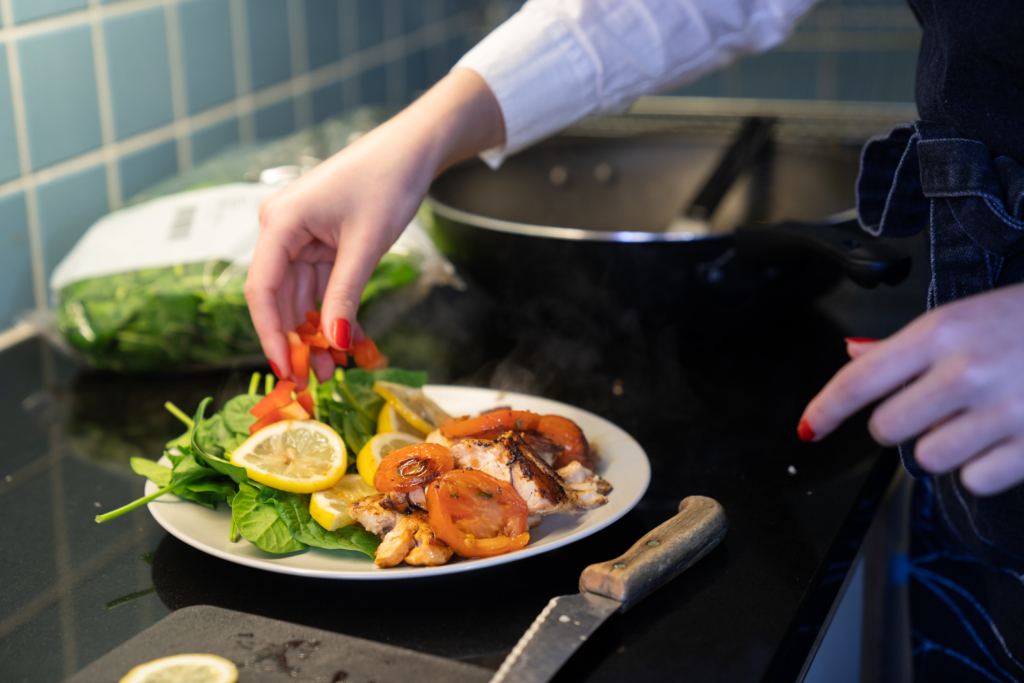
Dessert: Honey Rainbow Fruit Salad
Apples, oranges, pears, honey, lime
A fast, and fresh dessert is a great way to go, although this one does not contain chocolate it is just as sweet. This fruit salad has some of the “greenest” fruits, which happen to look like a bag of skittles. Apples, pears, and oranges all have low water usage, low carbon footprints, and low destruction levels. This salad could make a great side to some locally produced ice-cream if you have more of sweet tooth. The organic/locally produced honey and lime gives it an extra tang and you could even add some cinnamon for an extra touch.
Easy; Palatable; €€
